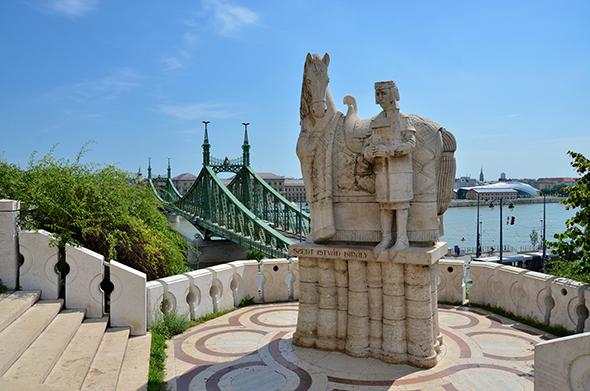Although the king St. Stephen (pictured above, with the Liberty Bridge and it’s turul birds in the background) was baptized in Prague by the first Archbishop there and is said to have brought Christianity to the Huns and Magyars in the year 1001 A.D., the most famous of the modern Hungarian ancestors is probably Attila the Hun, who rampaged across Europe during 434-453 A.D. He and his army of Huns (a nomadic clan who came west from the area around the Caspian Sea and created an empire under Attila) terrified the peoples of Europe.
Attila himself is said to have claimed the titles “Descendant of the Great Nimrod”, and “King of the Huns, the Goths, the Danes, and the Medes”—the last two peoples being mentioned to show the extent of his control over subject nations even on the peripheries of his domain. Attila reportedly possessed the “Holy War Sword of the Scythians”, which was given to him by Mars and made him a “prince of the entire world”.
By the end of the 12th century the royal court of Hungary proclaimed their descent from Attila. Lampert of Hersfeld’s contemporary chronicles report that shortly before the year 1071, the Sword of Attila had been presented to Otto of Nordheim by the exiled queen of Hungary, Anastasia of Kiev. This sword, a cavalry sabre now in the Kunsthistorisches Museum in Vienna, appears to be the work of Hungarian goldsmiths of the ninth or tenth century.
It is an historical fact that Pope St. Leo the Great met Attila outside the walls of Rome and persuaded him to turn aside and leave the already devastated city in peace. However, according to a mediaeval Hungarian chronicle, the Pope promised Attila that if he left Rome in peace, one of his successors would receive a holy crown (which has been understood as referring to the Holy Crown of Hungary) which was in fact the crown given to St. Stephen the king (pictured above).

